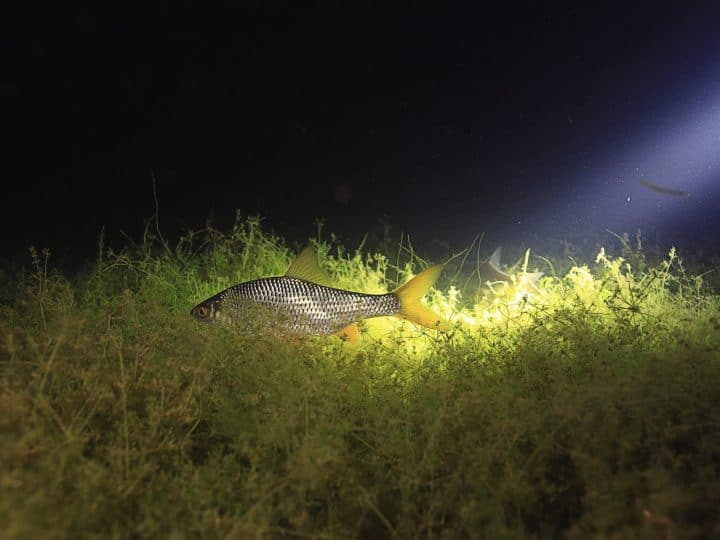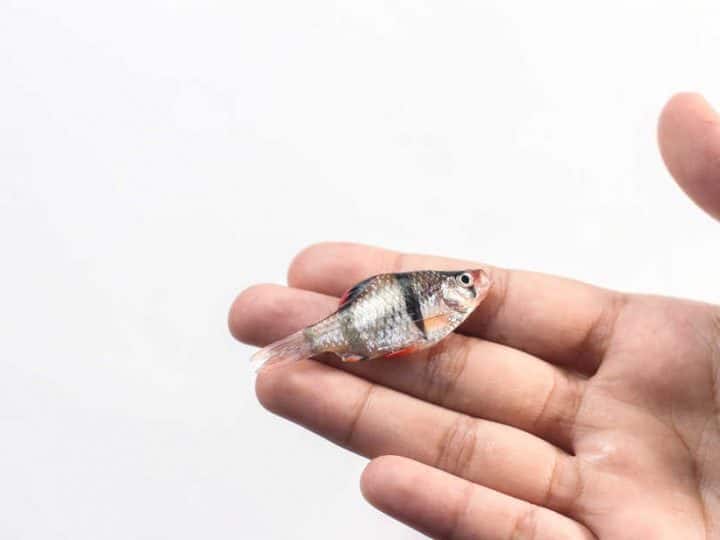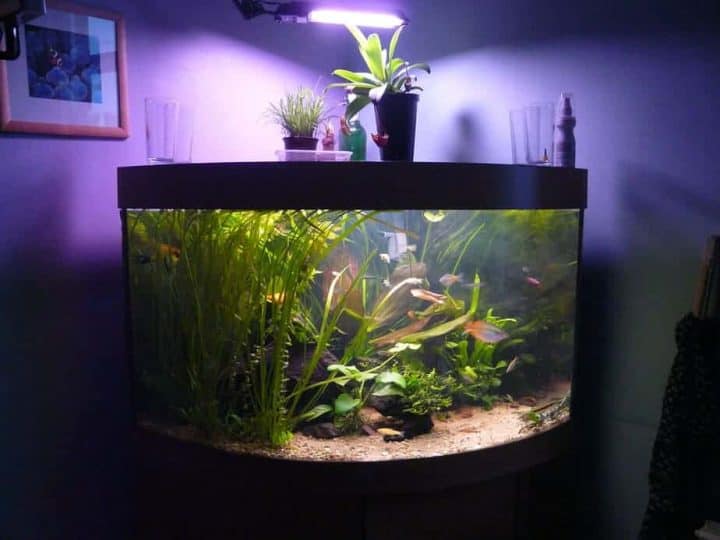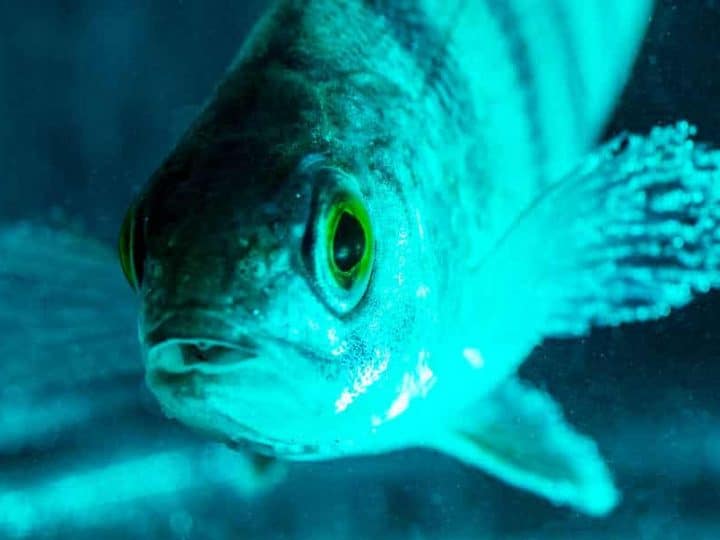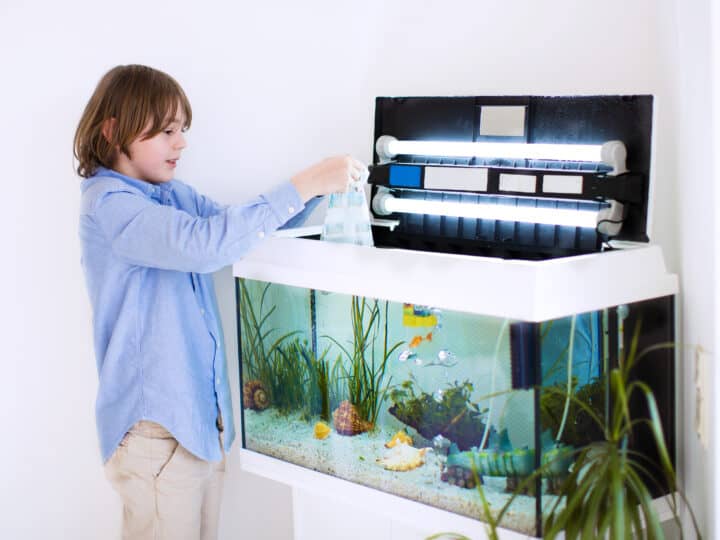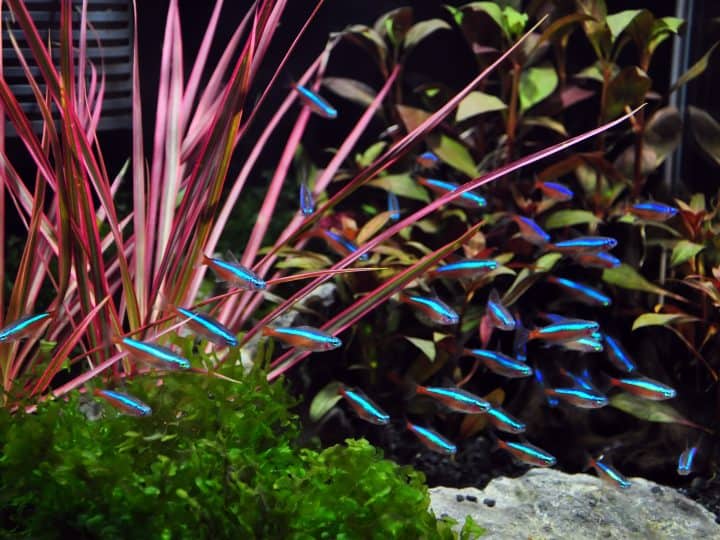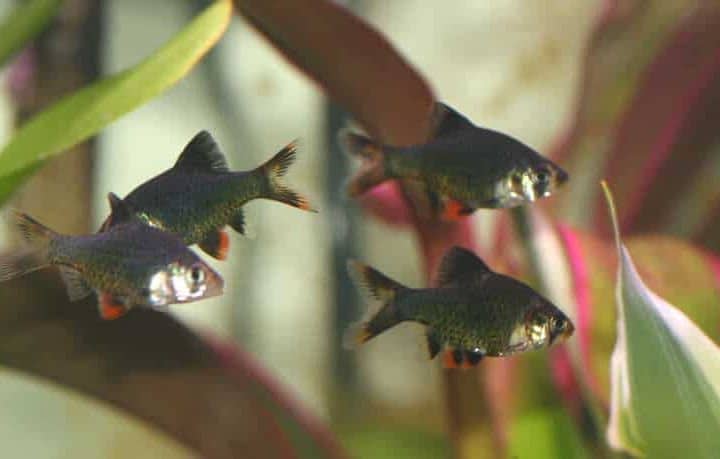A couple of years ago when I first got an aquarium, I thought you could add fish to a planted tank straight away. A friend told me that’s not the case, but I had to find out when to add fish to a new planted tank myself. I now know all about this, so I feel like I’m ready to share my knowledge with you.
Quick Answer
A planted tank needs to be cycled before adding fish. A colony of beneficial bacteria needs to develop over a period of 6 weeks so your tank can handle ammonia. Both the bacteria and the plants consume ammonia so make sure to maintain the right concentration (2ppm) of ammonia while cycling.
It’s important to know what you’re doing, otherwise you’re just wasting time waiting. A planted tank cycles in a slightly different way to “ordinary” aquariums. I will cover the difference to make sure that you’re prepared to cycle your planted tank with ease.
How long should you wait to add fish to a new planted tank
If you’re preparing your planted tank the right way, you have to wait about 6 for your tank to cycle. During this time your aquarium will slowly grow a colony of beneficial bacteria. These bacteria are mainly located in the filter but also grow on the glass and in the substrate. These bacteria “eat” ammonia, which is toxic to fish in low concentrations.
The bacteria will convert ammonia into nitrite (which still is toxic, just not as much) and finally into nitrate. Nitrate is not that toxic as long as you keep the dissolved concentration relatively low. Tip: to remove nitrate you perform a water change.
A planted tank is different to ordinary aquariums because plants also consume ammonia. It’s therefore important to add enough ammonia to feed both the growing bacteria colony as well as the plants. You can add any plants straight away and you do not have to wait.
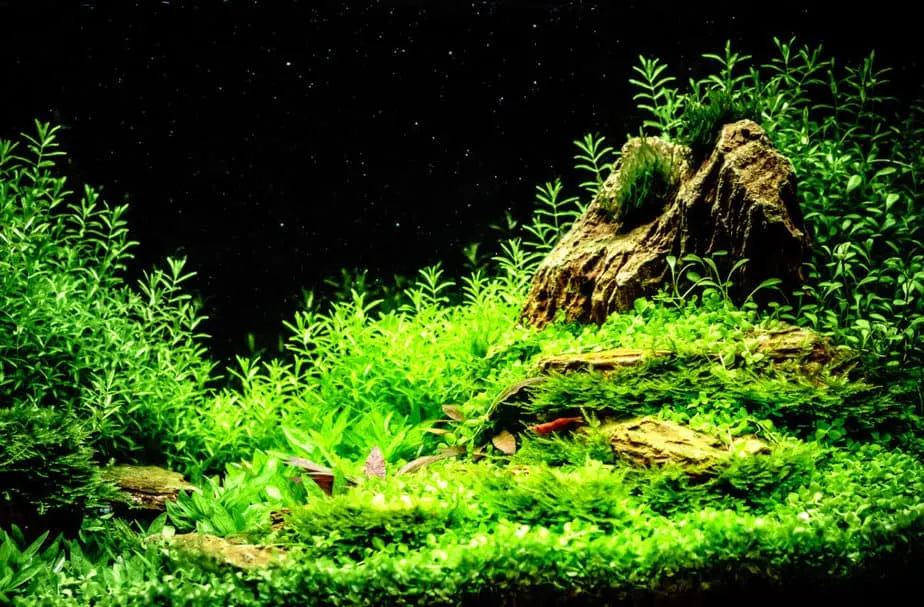
In the past (or the old fashioned way) people used some hardy fish to cycle their aquarium. They would add the hardy fish straight away, as they would be the ammonia source. In recent years the “fishless” cycle has taken over in popularity. In the new method you either add liquid ammonia or you add some fish food that will rot and become an ammonia source.
Because you’re dealing with a planted aquarium, I recommend using ammonia to try and maintain a 2 ppm (parts per million) concentration of ammonia during the first 4 months. Getting this right involves regular water tests to determine the current ammonia concentration.
To test the aquarium water parameters accurately you’ll need a liquid based test kit. I’ve been recommending API Freshwater Master kit for a long time and it’s received much praise over the years. It really gives the most bang for your buck and can do everything you need at this point. In interested you can check the current price here on Amazon.
When cycling a planted tank you have to think twice where your added ammonia went. A decrease in ammonia could mean that your beneficial bacteria colony is growing, but it could also be the plants that consumed it. Therefore, maintain a measurable ammonia concentration for at least 6 weeks to properly feed the bacteria.
Can you add fish to a planted tank straight away?
It’s always possible to add fish straight away, but I would definitely recommend against doing so. When your tank is still new, there are no beneficial bacteria present to convert the toxic ammonia into less toxic nitrate. The fish that you add will start to produce ammonia straight away and your concentration will steadily rise.
When the ammonia levels rise, the fish become very stressed and will eventually die. Like described earlier, in the past people would add a few fish to cycle their tank. With the current knowledge this is not necessary anymore and will result in unnecessary dead fish.
There is a way to add fish straight away: instant cycle an aquarium. The only reliable way to instantly cycle a tank is to start your new tank with filter media from an existing and established tank.
When you use “cycled” filter media you will instantly provide your new aquarium with a colony of beneficial bacteria that can deal with the bio load of any fish you add. If you choose this route, do not go overboard with the amount and size of fish that you add. A fish-less cycle can be unstable so keep the bio load manageable.
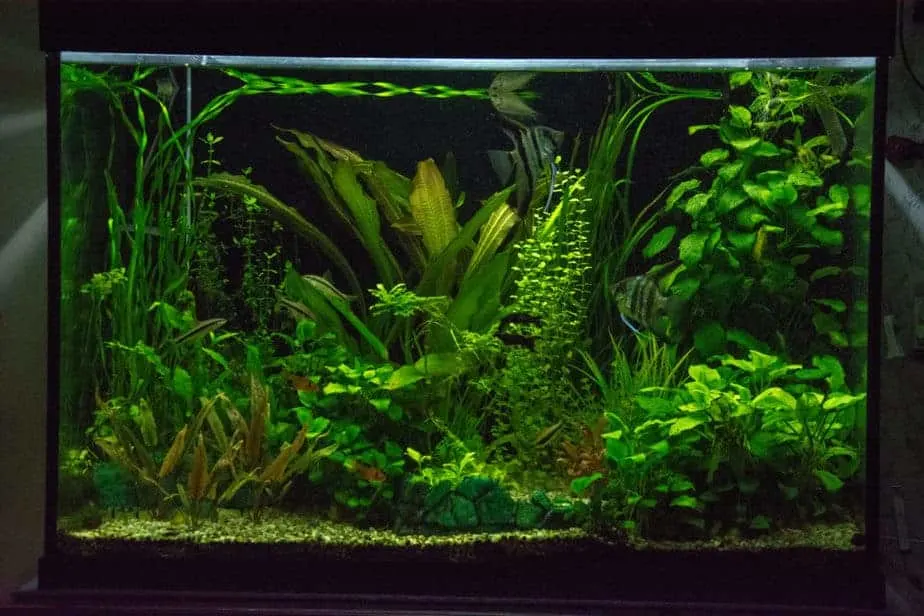
Do you need to cycle an aquarium before adding plants?
Another common question, but the answer is no! There is no need to cycle an aquarium before adding live plants.
To explain a little bit: ammonia is not toxic to plants. Instead, they use it as fertilizer and do not mind at all. If you add plants to a new aquarium you basically provide another method of breaking down (or removing) ammonia from the aquarium water.
If you look at it this way, plants even make the aquarium water safer for fish in the early stages of an aquarium. In later stages they still maintain their cleaning properties and therefore make a great addition to any aquarium.
Products that allow your tank to cycle faster
There’s a wide variety of products that you can buy online and in your local fish store that claim to significantly speed up the time it takes to cycle an aquarium. Are they selling the truth or are they straight up lying?
To be honest, they do assist in cycling an aquarium. However, you should be careful relying fully on products like this. They simply can not replace growing an actual colony of beneficial bacteria. What they can do is either add beneficial bacteria directly or add something that tries to speed up the growth.
If you’re inpatient (which I sure as hell was when I got my first aquarium) you’ve got to take a look at a product called “API Quick Start”. It’s available in your local fish store, but you can also buy it online on Amazon. Please note this is an affiliate link so I do get a small commission. If you choose to buy through my link I’m very grateful.
Please be careful and don’t believe their claim to “allow instant addition of fish when starting an aquarium”. Instead, use it to start your tank and use an aquarium test kit to measure dissolved ammonia, nitrite and nitrate. With the measurement it’s easy to determine whether your tank is properly cycled.

